My second batch of banjos - 5-9 are an experiment in the same form but in different woods. Burch, Black walnut, Mahogany & Katalox, Maple & Hickory. Each was a lesson in itself.
Playtesting by Lance Baker. Lance is a far better player than me. It takes a brave and talented player to tackle a fretless banjo. As much as I enjoy the object, playtesting and hearing my creation come to life in its true purpose, in talented hands is the greatest reward. For the curious banjoist - These are Aquila Nygut strings, John Balch goat skin head, with a Black Walnut Neck and Ring.
The first in this series was made of a Burch neck with a Poplar ring. I recycled a set of Ebony piano keys for the nuts, tailpiece, and bridge. Burch is strong enough to take the strain but easy to work. It has the sweetest smell when carving and sanding. I used Yellow Heart to make washers for hardware inside the ring.



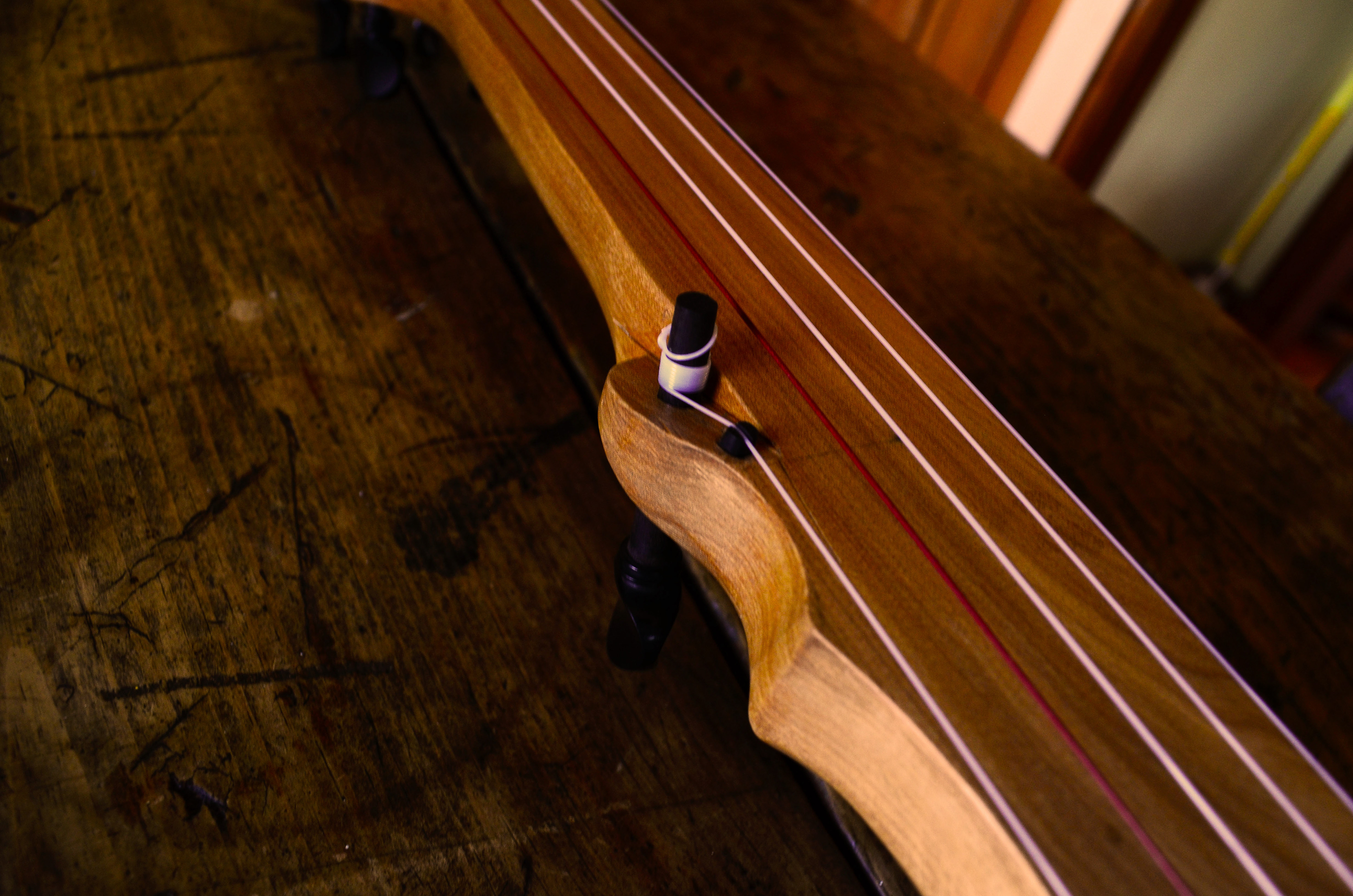


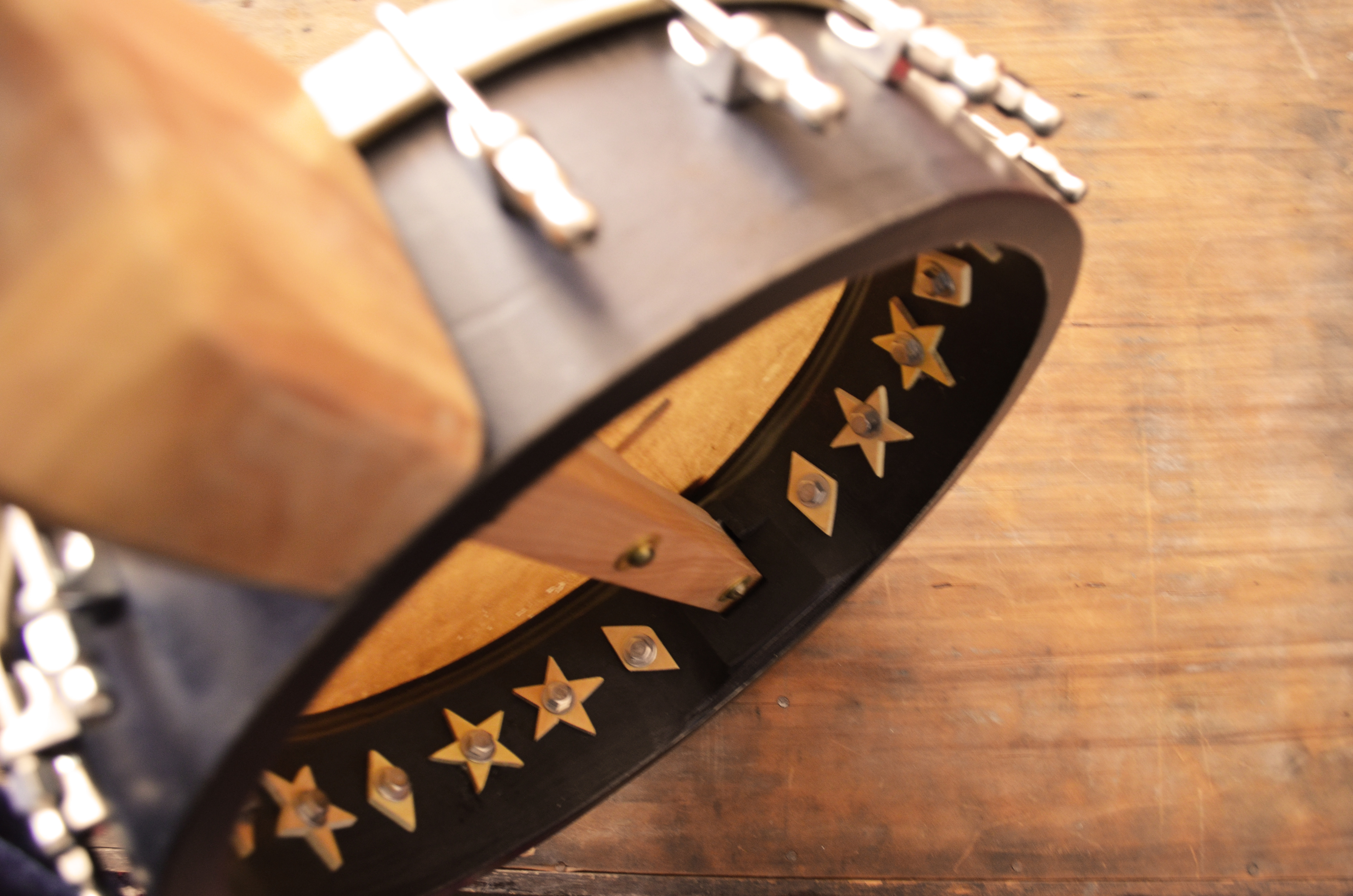


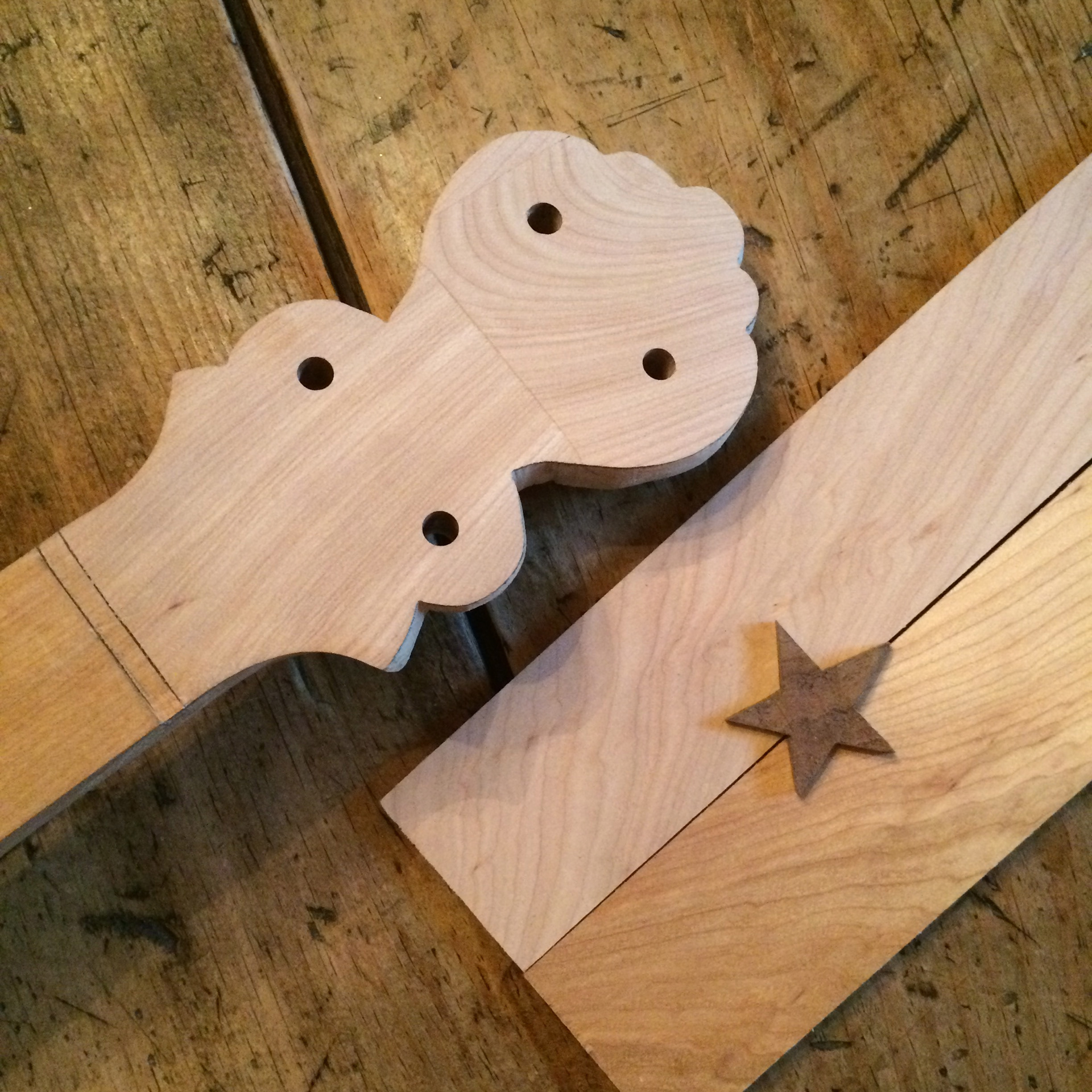


I named this company after my Grandfather, Mack Corley. He was born in 1900. He spent his life making a meager living on his farm. He never had time for music, but I do remember him dancing a jig or two. I think he would have smiled at seeing and hearing these.
Another playtest - This banjo has steel strings, a John Balch goat skin head, a Mahogany neck, a Cherry ring, a brass tension hoop, and no tone ring.














This banjo has a Mahogany neck and a painted poplar ring. I added a thick fretboard to this one, made of Katalox (I've heard it called Mexican Ebony). The tailpiece is also Katalox. Other detail woods include piano key ebony nuts and an elaborately inlaid star made with a combination of Yellow Heart and Maple.
Number 7 has a Black Walnut neck, and fretboard, with a burl Walnut head vineer and a Yellow Heart star inlay. Other details are made of a combination of Yellow Heart and piano key Ebony. Although these banjos had simpler poplar rings, they still had a rich warm sound. For this particular ring, I did several coats of paint that I sanded back down. On top of these previous layers I added more pain and then carved out a snake that crawls all along the outside of the ring.
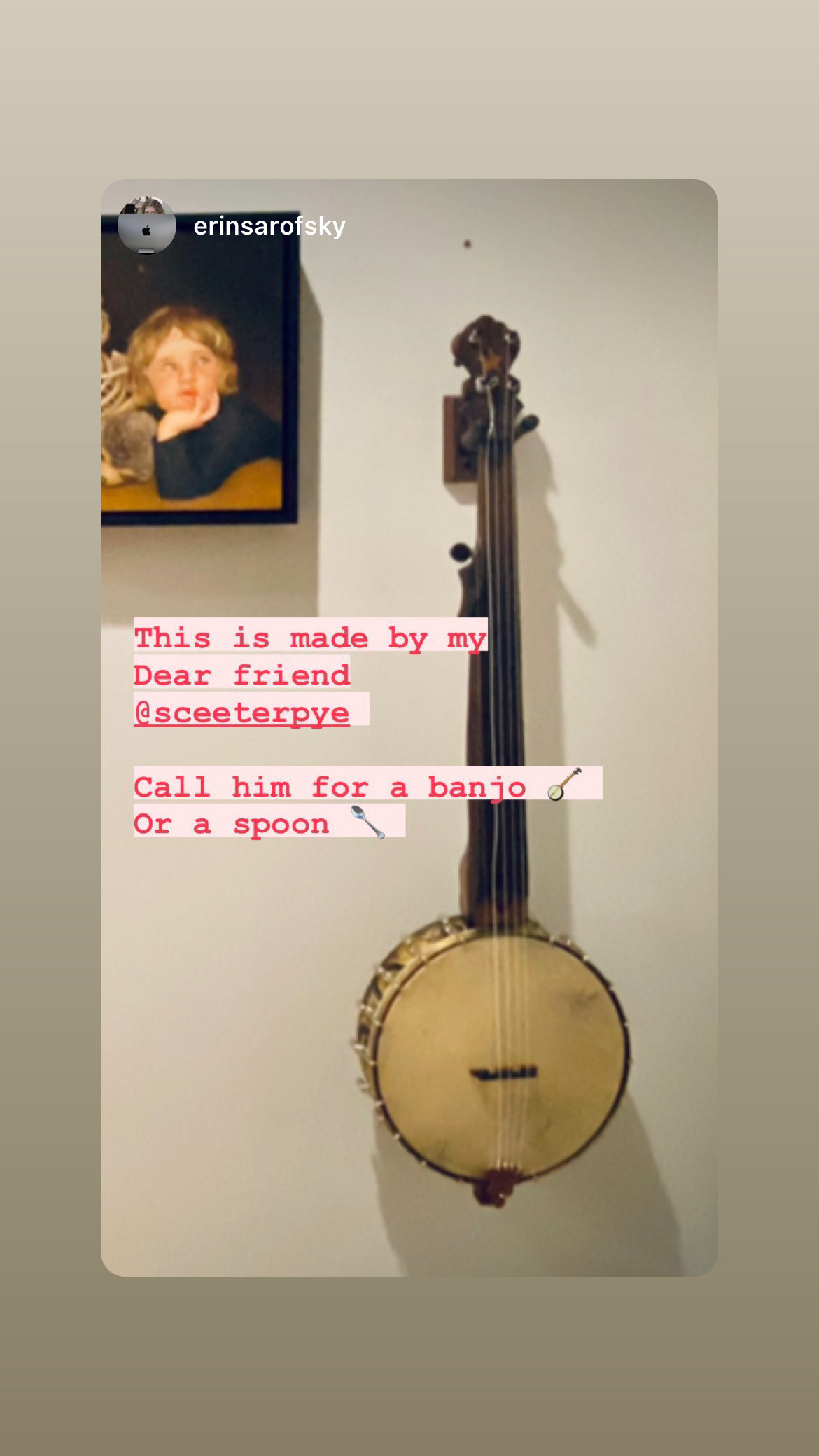












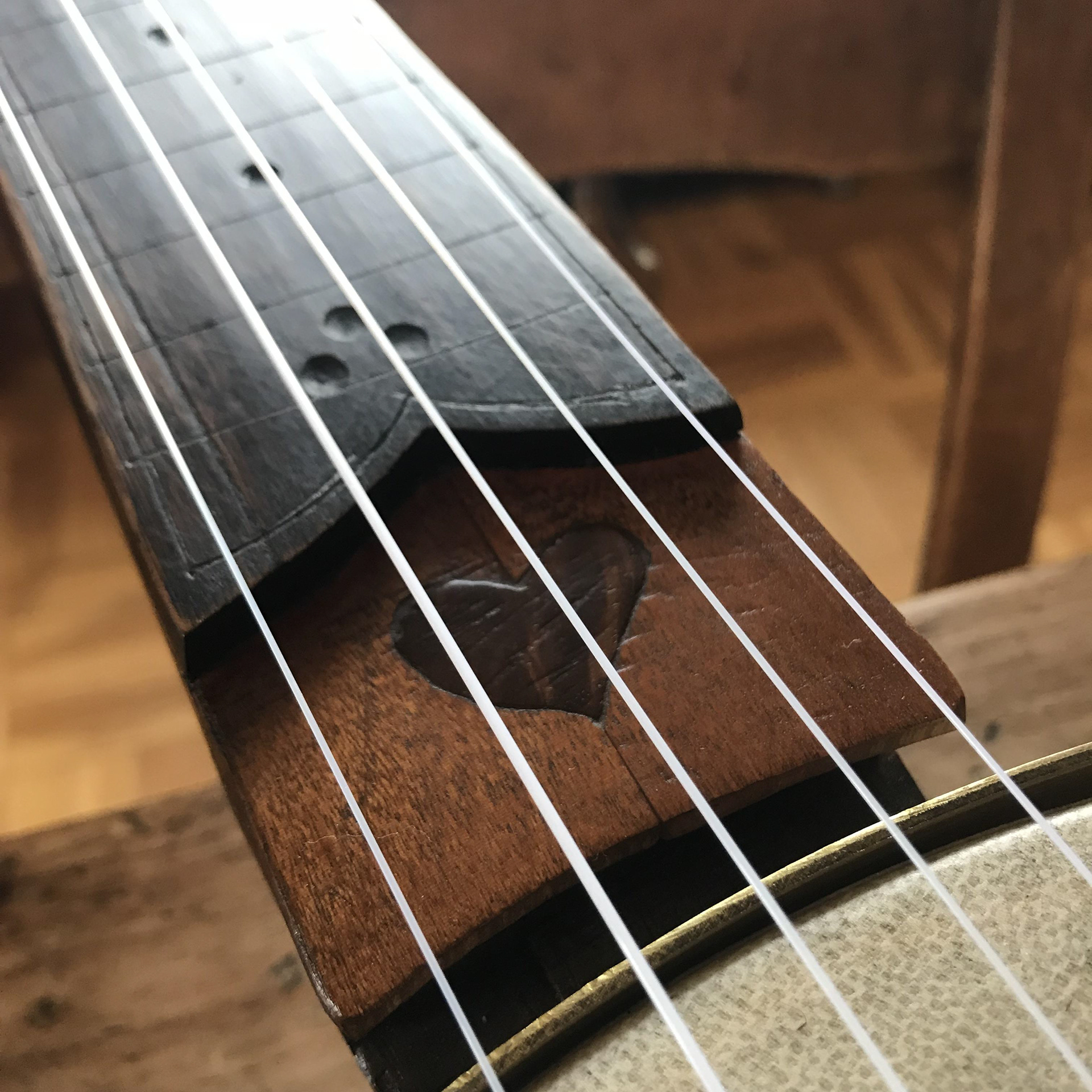
Banjo number 9 hangs on a wall next to me as I write this. I also call it the "White Devil." Made of White Walnut for the neck and steam-bent Hickory for the ring, it's incredibly solid and was very hard to carve and shape. This is one of my best constructions, but I'll stick to softer woods like Cherry and Black Walnut for my next generation. This whole enterprise is an excuse to learn new things. I learned a lot about materials and processes from steam bending. Steam-bending Hickory was perhaps a bit insane. Feeling this banjo "wanted" to be white I shaped the nuts and bridge out of a leftover hambone. Yes, leftover hambone.











